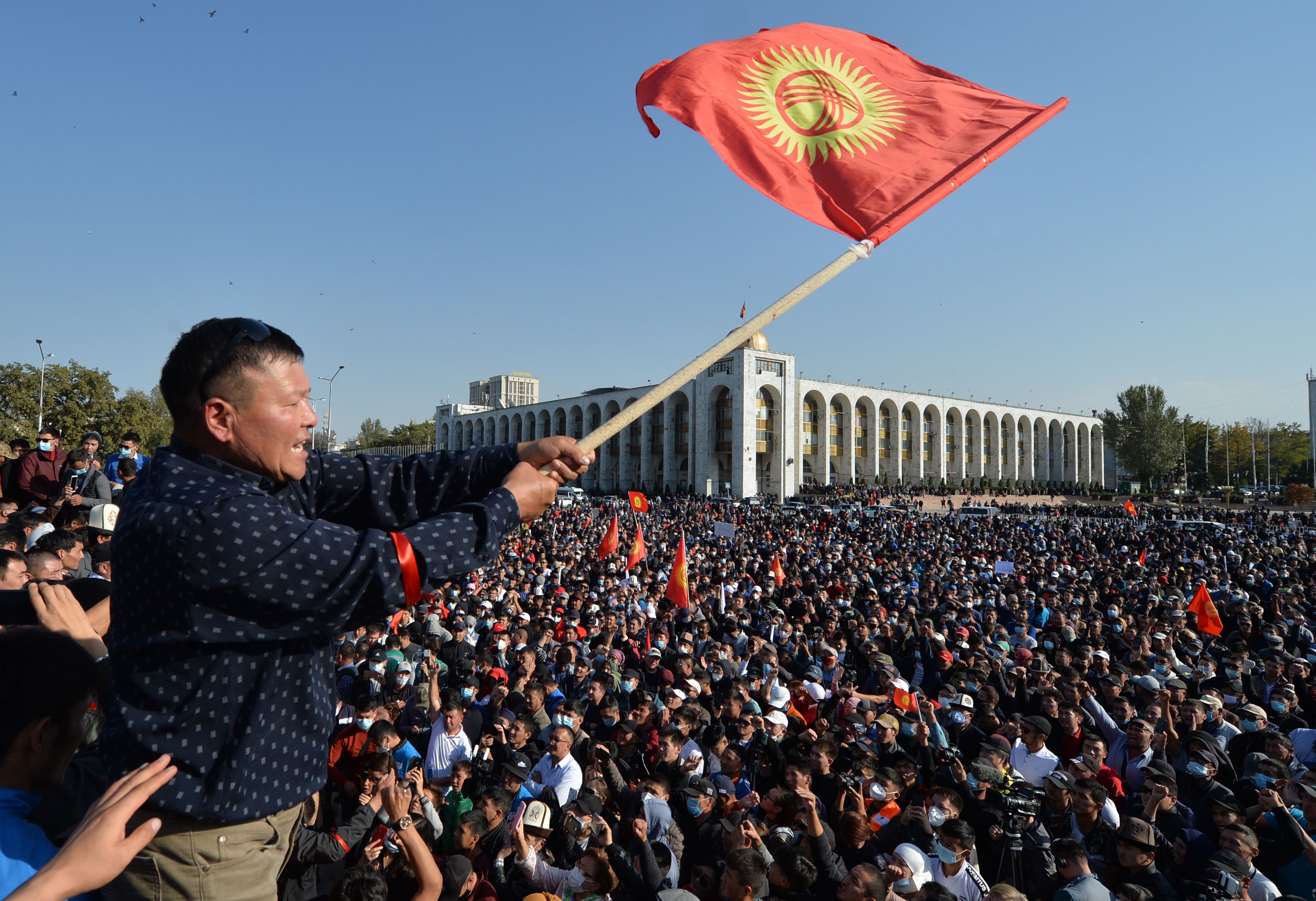Revolution returns to Kyrgyzstan as election results overturned
Violent protests the latest example of post-Soviet unrest on Russia’s border

Your support helps us to tell the story
From reproductive rights to climate change to Big Tech, The Independent is on the ground when the story is developing. Whether it's investigating the financials of Elon Musk's pro-Trump PAC or producing our latest documentary, 'The A Word', which shines a light on the American women fighting for reproductive rights, we know how important it is to parse out the facts from the messaging.
At such a critical moment in US history, we need reporters on the ground. Your donation allows us to keep sending journalists to speak to both sides of the story.
The Independent is trusted by Americans across the entire political spectrum. And unlike many other quality news outlets, we choose not to lock Americans out of our reporting and analysis with paywalls. We believe quality journalism should be available to everyone, paid for by those who can afford it.
Your support makes all the difference.Kyrgyz authorities on Tuesday agreed to the demands of opposition demonstrators, annulling the results of the weekend’s disputed parliamentary elections.
The news was the predictable end to a dramatic night of stone-throwing, teargas and water cannon – one that left the revolutionary-inclined former Soviet republic without any clear political leadership.
The protests pitted a motley group of opposition forces against the government, whom they accused of fixing the election. By morning, the momentum had clearly switched to the streets, with demonstrators seizing the seat of government and securing the release from prison of key figures including former president Almazbek Atambayev.
At least one person died, more than 600 people were injured, and 13 people were put into intensive care during the clashes.
The run-up to Sunday’s elections had been mired in accusations of mass vote-rigging and bribery. In the event, the official count handed a parliamentary majority to parties connected to the ruling elite on just under 50 per cent of the vote. Perhaps just as importantly, however, it left opposition forces with ties to influential oligarchs without parliamentary representation.
Driven into a corner, the country’s president, Sooronbai Jeenbekov, said on Tuesday morning that he had instructed electoral officials to “investigate the results of the elections”. The order was made to avoid an escalation in tensions, he insisted: “Peace in the state, and stability in society are more valuable than any deputy’s mandate.”
Kyrgyzstan remains one of the more democratic nations of the former Soviet Union. Its traditionally competitive elections, political parties and representative parliament are largely an aberration in the region. At the same time, it has not been able to free itself from a cycle of violent protest, weak government and political chaos.
This week’s events are the third time that the republic has witnessed violent revolutionary upheaval in the space of 15 years. In 2005, during events that became known as the Tulip revolution, Kyrgyzstan's first president, Askar Akayev, was ousted and forced to seek refuge in Moscow. In 2010, Kyrgyzstan’s second president, Kurmanbek Bakiev, made an escape to Minsk.
This time around, President Jeenbekov remains in the capital, Bishkek, and appears to be clinging on.
“The coup is so far only half successful,” suggested Arkady Dubnov, a political analyst and fellow of the Carnegie Moscow Centre. “The demonstrators have what they asked for, with the president distancing himself from the elections and new elections likely to follow, but people haven’t forgotten he is responsible for those elections too.”
With events moving quickly, the prospect for continuing instability seems clear. On Tuesday, a group of opposition parties announced they had formed a “coordination council”, but its legitimacy is suspect and internal conflicts within the opposition abound.
The focus now turns to the reaction of pro-presidential regions in the south of the country, and to the response of Russia and other external regional powers.
Moscow, for its part, finds itself facing an increasingly unstable picture on its periphery. In the space of two months, it has witnessed an uprising in Belarus, military hostilities between Azerbaijan and Armenia in Nagorno-Karabakh, and now a semi-revolution in Kyrgyzstan. Problems in Ukraine have not gone away either.
The Kremlin has been unable to show the states on its border a model of collaborative growth
Most of these moments have clear roots in unresolved conflicts of the Soviet era. Their appearance now could be interpreted as a final reckoning of the Soviet collapse, 30 years on. Equally, the events of the last few weeks have demonstrated the extent to which Moscow has been unable to keep friends and control over its near neighbours.
The initial response of deputies in Russia’s State Duma – describing those events as a “colour revolution” – is unlikely to be met with great understanding in Bishkek.
“The Kremlin has been unable to show the states on its border a model of collaborative growth,” said Carnegie’s Mr Dubnov.
“They have no positive roadmap for development, and that’s the problem.”


Join our commenting forum
Join thought-provoking conversations, follow other Independent readers and see their replies
Comments